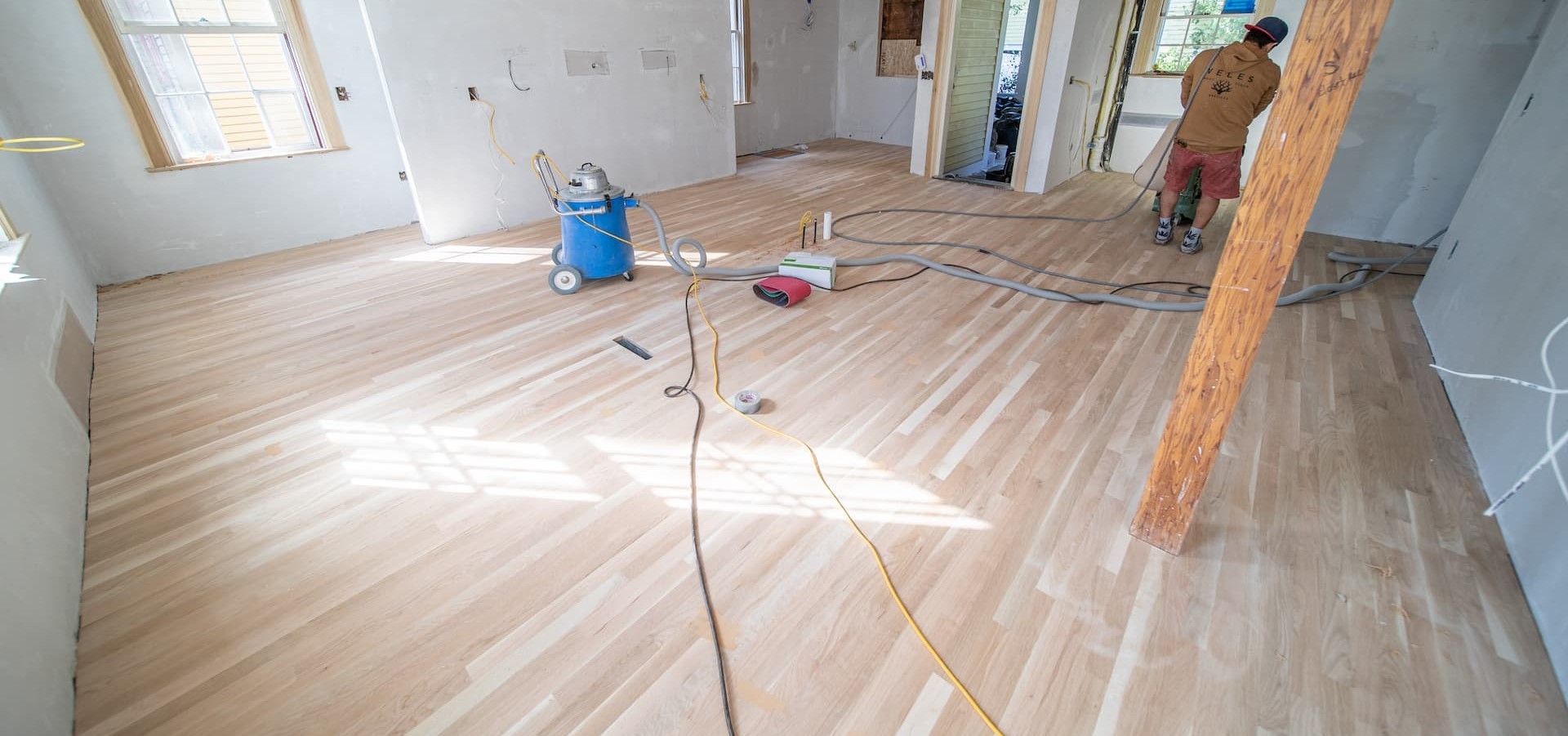Water damage to wood flooring can harm them, producing both esthetic and structural difficulties. This damage frequently results in warped floors and mold, and it can even reduce the value of your property. Knowing how serious water damage may aid in dealing with and preventing it, therefore protecting your valuable wood floors from long-term damage.
Identifying Water Damage

Catching water damage early on hardwood floors is key to saving them. Here's what to look for:
-
Damage Timeline: Water damage speed varies. Minor spills might not be an issue for treated wood, but large amounts can get under the boards, causing swelling.
-
Smell and Shape Changes: A musty smell suggests hidden moisture or mildew. If the middle of the boards bulges upwards, it's likely due to moisture on the surface.
-
Visible Signs: Stains, color changes, buckled wood, or nails and boards lifting are obvious signs of water getting in.
-
Mold: Finding mold is a bad sign. It grows in damp areas, showing that moisture has been around too long.
Spotting these early helps you act fast to fix and protect your floors.
Addressing the Damage
If you spot water damage on your hardwood floors, quick action is key. Here's what to do:
-
Stop the Water: First, find and fix the water source. It might be leaks or burst pipes.
-
Clear and Dry: Remove all wet items like furniture and rugs. Then, mop up the water with towels or a wet vacuum.
-
Clean the Floors: Clean off any dirt or debris to prevent further damage and get ready for drying.
-
Dry Well: Wipe up, use dehumidifiers, and set up fans to circulate air. Don't forget under cabinets and appliances.
-
Look for Mold: Check for mold and tackle it right away to avoid health risks and spreading.
-
Use a Water Vacuum: A water vacuum can help clean up, especially where water has been collected.
-
Deal with Swollen Floors: Use fans and a dehumidifier to dry the room and reduce wood swelling.
These steps can help you manage water damage, keeping your floors in good shape.
Preventative Measures
To keep your hardwood floors safe from water damage, use these strategies:
-
Rugs and Mats: Put mats and rugs in key areas like doorways, under sinks, and near pet bowls. They'll catch water and protect your floors.
-
Regular Checks: Frequently inspect your home for water risks. Look for leaks in pipes, roofs, and appliances to catch issues early.
-
Seal Your Floors: Every few years, seal your hardwood floors. This creates a moisture barrier and keeps them looking good. Clean spills quickly too.
-
Be Cautious with Engineered Wood: Engineered wood floors aren't as water-resistant. If they get wet, you might need to replace and refinish them.
These steps will help you prevent water damage and keep your hardwood floors in top shape.
Specific Cases
Handling water damage on hardwood floors requires tailored methods, especially in these scenarios:
|
Engineered Wood Floors |
These floors have a non-water-resistant core, making them vulnerable to water. If soaked, they may expand and cup. You often need to replace damaged boards and refinish the whole floor. |
|
General Water Damage |
Begin by clearing the area. Clean with soap and water, then dry thoroughly. Proper drying is crucial to prevent more damage. |
|
Old Water Stains |
To remove these, a mix of vinegar and baking soda works well. It's a natural way to revive the wood without harsh chemicals. |
|
Wet Subfloors |
When the water reaches the subfloor, the problem is more serious. If there's mold, replacing the flooring might be necessary. |
|
Water in Subfloors |
Water in subfloor cracks can harm both the subfloor and the hardwood. It's important to understand the damage's extent to decide on repair or replacement. |
Each case of water damage might need a different approach, so assess the damage carefully to choose the right solution for your floors.
Conclusion
In short, dealing with water damage on hardwood floors requires quick identification, correct repair methods, and preventive steps to maintain their beauty and strength. Acting fast and getting professional help if needed is key to saving your floors from water damage.



